PRINTER FRIENDLY PDF
EPUB
AUDIOBOOK
As a part of the Marine Corps History Division, the mission of the Archives Branch is to collect, preserve, and provide access to primary source documentation pertaining to the history of the U.S. Marine Corps. A vast collection of personal papers comprises a major portion of this documentation. The Archives Branch maintains more than 5,600 collections of correspondence, diaries, photographs, maps, scrapbooks, and other personal items created and collected by Marines ranging from privates to commandants. As an ever-growing section of the archives, the Personal Papers Collection receives approximately 125 new donation offers annually. These donation offers are evaluated by a team of archivists to determine whether the archives is the appropriate repository for the items being offered. Offers are reviewed on a case-by-case basis. If the materials are deemed to have lasting historical value, a recommendation to accept them into the permanent holdings is referred to the president of Marine Corps University for a final decision. Upon acceptance, collections are arranged and described, and then made available to researchers.
Many of the collections are donated by the Marines whose service they document. Whenever possible, Archives Branch requests that donors bring their collections to Quantico, Virginia, in person. Meeting the donor enables archivists to better understand the context of the creation and use of the materials. It was under these circumstances that Archives received one of its newest collections: the personal papers of Frederick J. Vogel.
Frederick Vogel was commissioned as a first lieutenant in the Marine Corps in June 1965. He served a total of 42 months in combat in Vietnam (1967–69 and 1971–72). During this time, he served with the 1st Marine Division Headquarters, 1st Force Reconnaissance Company, and 1st Reconnaissance Battalion. Subsequently, he served with the Phoenix Program as a Provincial Reconnaissance Unit (PRU) field commander in Hoi An Province and later as a field advisor with the Vietnamese Sea Commandos under U.S. Military Assistance Command, Vietnam—Studies and Observations Group (USMACV-SOG).2
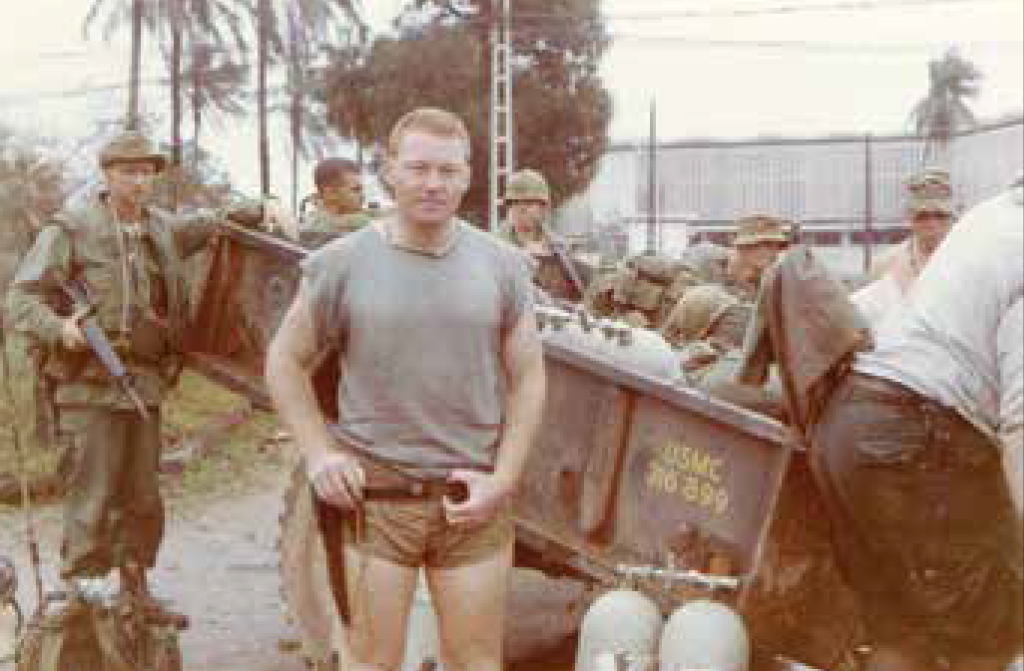
The 1st Force Reconnaissance Company diving team after clearing the Silver Bridge. Frederick J. Vogel Collection, COLL/5577, Archives Branch, Marine Corps History Division
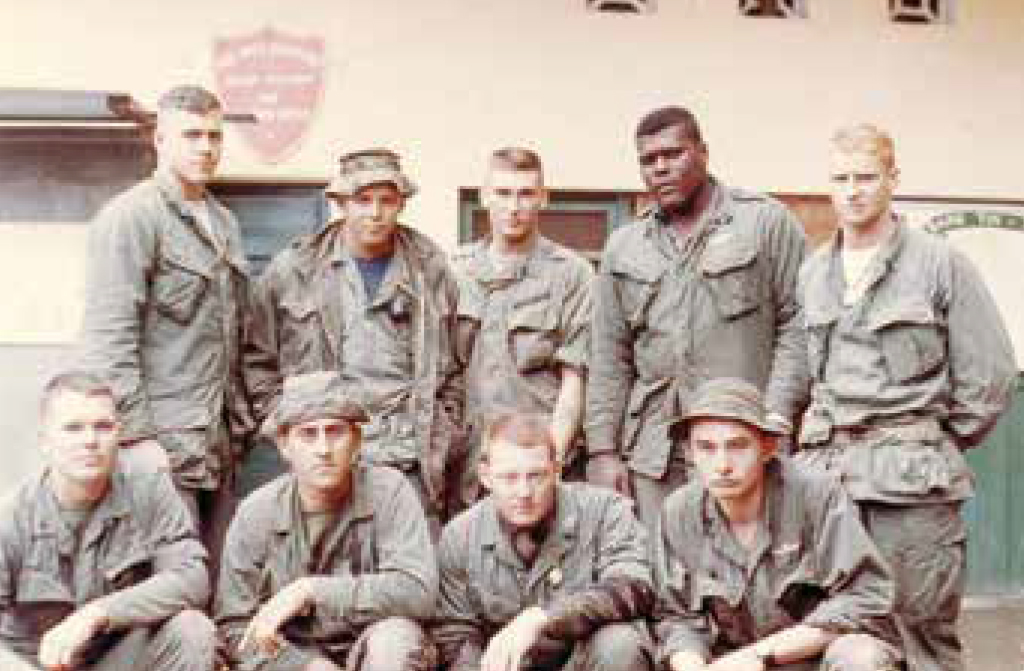
1st Force Reconnaissance Company Diving Team at USMACV compound in Hue-Tet 1968. The 1st Force Reconnaissance Company also served as infantry in Hue, bringing them under constant mortar and small arms fire. The destruction in the city was substantial. Frederick J. Vogel Collection, COLL/5577, Archives Branch, Marine Corps History Division
Vogel was released from active duty in July 1972. As a reservist in Thailand, he served as liaison officer between Joint U.S. Military Advisory Group, Thailand and the Royal Thai Army/Navy/Marine Special Operating Forces for more than eight years. He retired from the Marine Corps Reserve as a colonel in 1995.
In April 2016, Archives was contacted by now colonel Vogel, who indicated he had some Vietnam photos he was interested in donating. Archives receives many donation offers every month, so he was sent the collection statement and a request to send in the materials he was interested in donating. Approximately a week later, Archives received digital scans of Vogel’s photographs and copies of books he had prepared using the photos. An initial review of Vogel’s photographs confirmed that this was a very unique collection that held great research potential. Though Vogel’s scans were of high quality, Archives always endeavors to obtain original photographs. Luckily, Colonel Vogel readily agreed and also was willing to deliver them in person.
Later that month, he brought all his photograph albums to Quantico, and he spent a couple of hours discussing his experiences in Vietnam and Thailand. At the end of this meeting, he donated 23 photograph albums.
Once the collection was officially accepted, it was processed by removing as many photographs as possible from the albums while maintaining the original order and subject of each folder. The collection is arranged primarily in chronological sequence by album. The collection also contains Vogel’s service records, newspaper clippings, propaganda posters, and a variety of other documents, though photographs comprise the majority of the collection.
The images from Vietnam include Marines on patrol, scenes from Hue City, Marines around Phu Loc, a flamethrowing tank, a change of command ceremony, aerial views of the area, an enemy situation map, Da Nang, and Vietnamese locals.
The photographs from his service with the Mitraphap Education Foundation (a joint Thai-U.S. foundation to foster friendship and cooperation between the Thai and U.S. military forces) include parachutists, hand-to-hand combat demonstrations, exhibitions of Thai culture, and musical presentations.
The final processed collection consists of three boxes of material primarily related to Vogel’s service as the executive officer of 1st Force Reconnaissance Company in Vietnam during the Tet offensive from 1968 to 1969 and with the Mitraphap Education Foundation. There is also a small amount of material related to his father, Raymond W. Vogel Jr., who was a naval aviator killed during the Korean War.
Hue was the major focus of the Tet offensive, which began on 30 January 1968. Passing through Hue was Highway 1, an important supply line that made the city a valuable asset. The city also provided access to the Perfume River. On the night of 30–31 January, the Viet Cong forces attacked and were able to rapidly occupy most of the city. During the next month, the Marines and the Army of the Republic of Vietnam gradually drove them out during intense house-to-house fighting. With 1st Force Reconnaissance Company, Vogel led a diving team under intense fire into Hue to reconnoiter the approaches across the Perfume River and to prepare the advance of Marine infantry units to recapture the Citadel.
Later in the Vietnam War, small teams of Vietnamese special police, led by American military and Central Intelligence Agency (CIA) personnel, were tasked with destroying the Viet Cong infrastructure. These special police units were called provincial reconnaissance units (PRUs), and Vogel served as a PRU commander from February to September 1969.
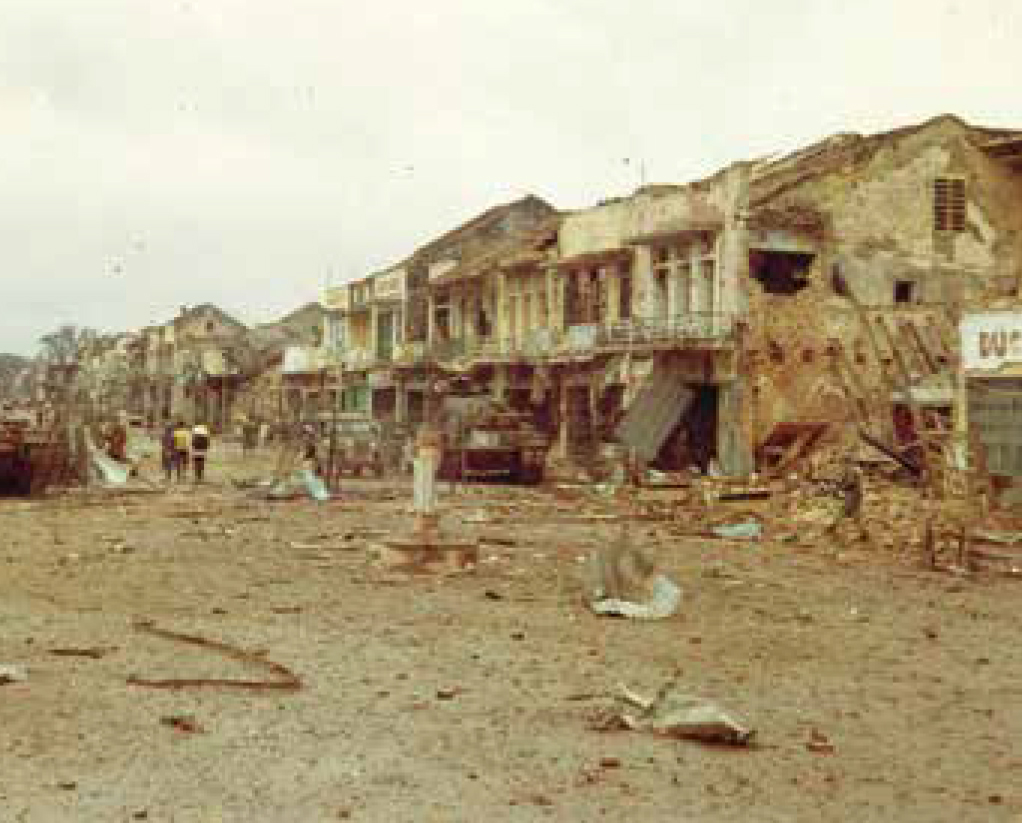
Street scene in Hue 1968. Two blown-out tanks sit on either side of the street; a third disabled tank is just out of the picture. The remains of the tank crews were still at their stations. Frederick J. Vogel Collection, COLL/5577, Archives Branch, Marine Corps History Division
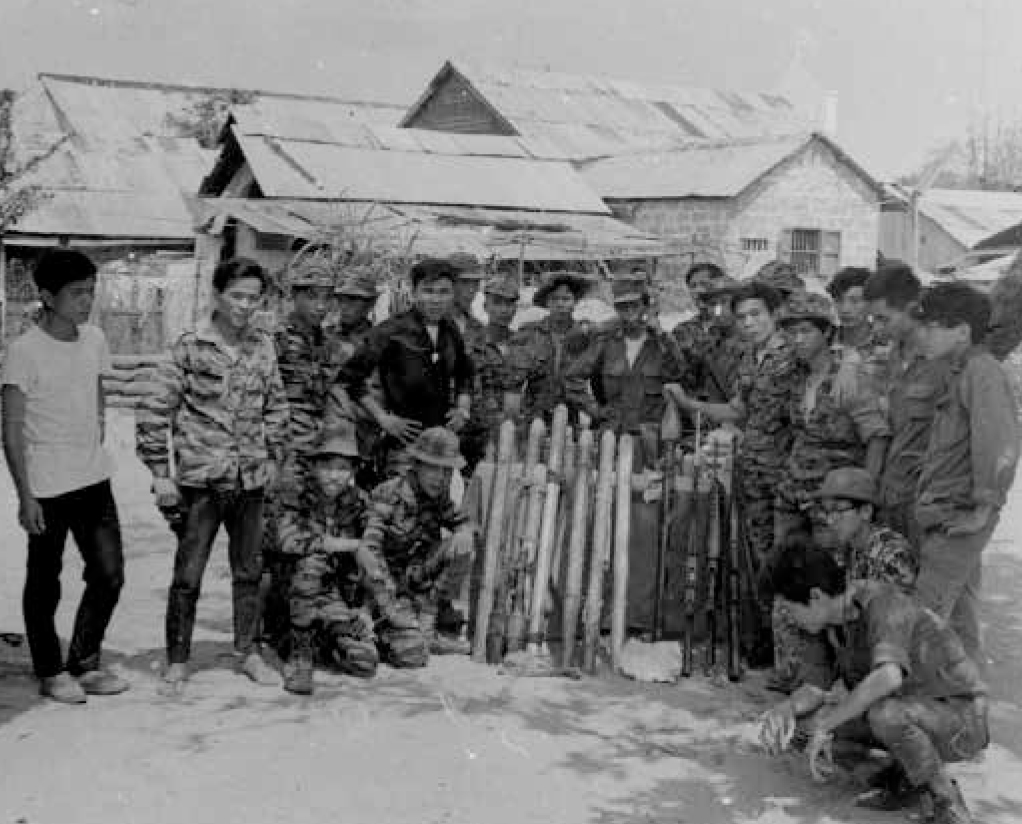
According to Vogel, “the Quang Nam PRU leadership was second to none—dedicated, courageous, some say ruthless—and the enemy feared and respected them.” Frederick J. Vogel Collection, COLL/5577, Archives Branch, Marine Corps History Division
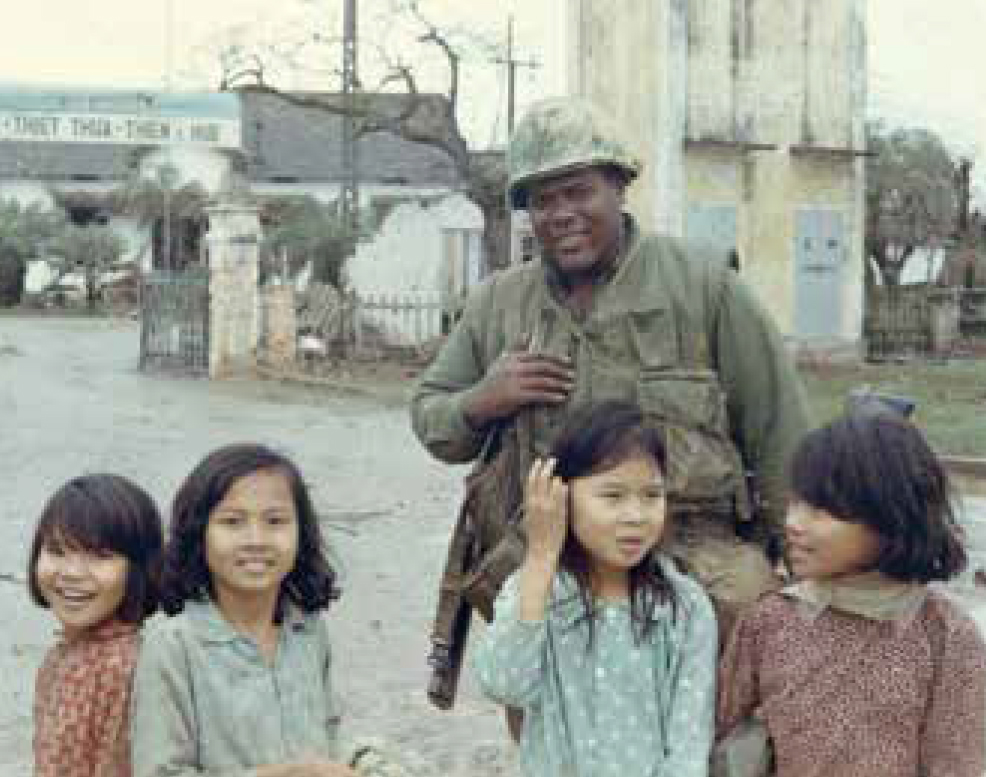
“Among all the lasting images, though, it was the faces of the children that remain the most vivid. In the midst of war, they still projected innocence, hope, and promise. These young girls near Hue, with Sgt Hughes, are forever etched in my memory,” said Col Vogel. Frederick J. Vogel Collection, COLL/5577, Archives Branch, Marine Corps History Division
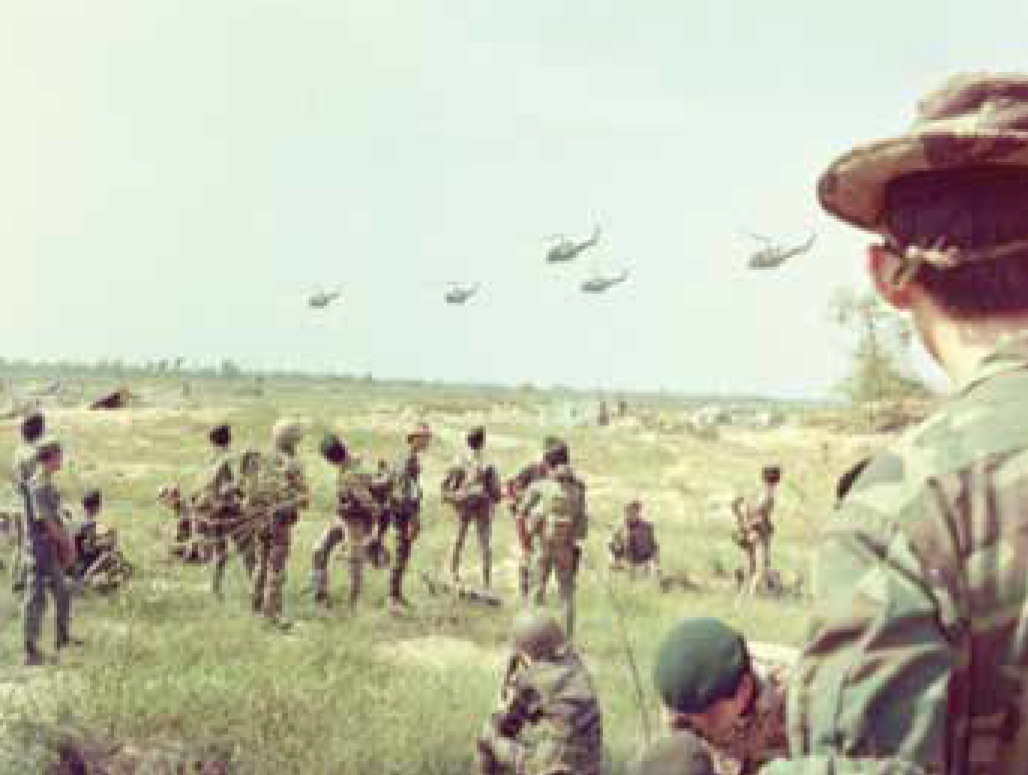
A provincial reconnaissance unit en route to a joint operation on Go Noi Island, Vietnam, deep in the heart of enemy-controlled territory. Frederick J. Vogel Collection, COLL/5577, Archives Branch, Marine Corps History Division
Vogel’s last tour in Vietnam was with USMACVSOG and the Naval Advisory Group. The Vietnamese Sea Commandos were launched by patrol torpedo (PT) boat to raid along the north Vietnamese coast between February 1971 and February 1972. These commandos were experts at black operations against the enemy. They would infiltrate enemy territory by small boat and then conduct combat operations ashore, mostly at night.
Colonel Vogel left active duty in 1972 and pursued a career in government, serving as an operation officer with the CIA and as a foreign service officer with the Department of State. During this time, he continued to serve in the Marine Corps Reserve. In that capacity, he served as liaison officer between Joint U.S. Military Advisory Group Thailand and the Royal Thai Special Operation Forces for almost nine years. As deputy chief of mission and periodically charge d’affaires at the U.S. embassy in Vientiane, Laos, he also supported the U.S. POW/MIA task force. He retired from the Department of State in 2004.
Since Colonel Vogel supplied high-quality scans of the images from his collection (and with the help of Archives’ summer intern), archivists were able to place a large portion of these images on the branch’s Flickr page. On 7 September 2017, Archives was honored to have Colonel Vogel come to the History Division to deliver a talk on his career, during which his photographs were displayed on a wall-size LCD screen.3
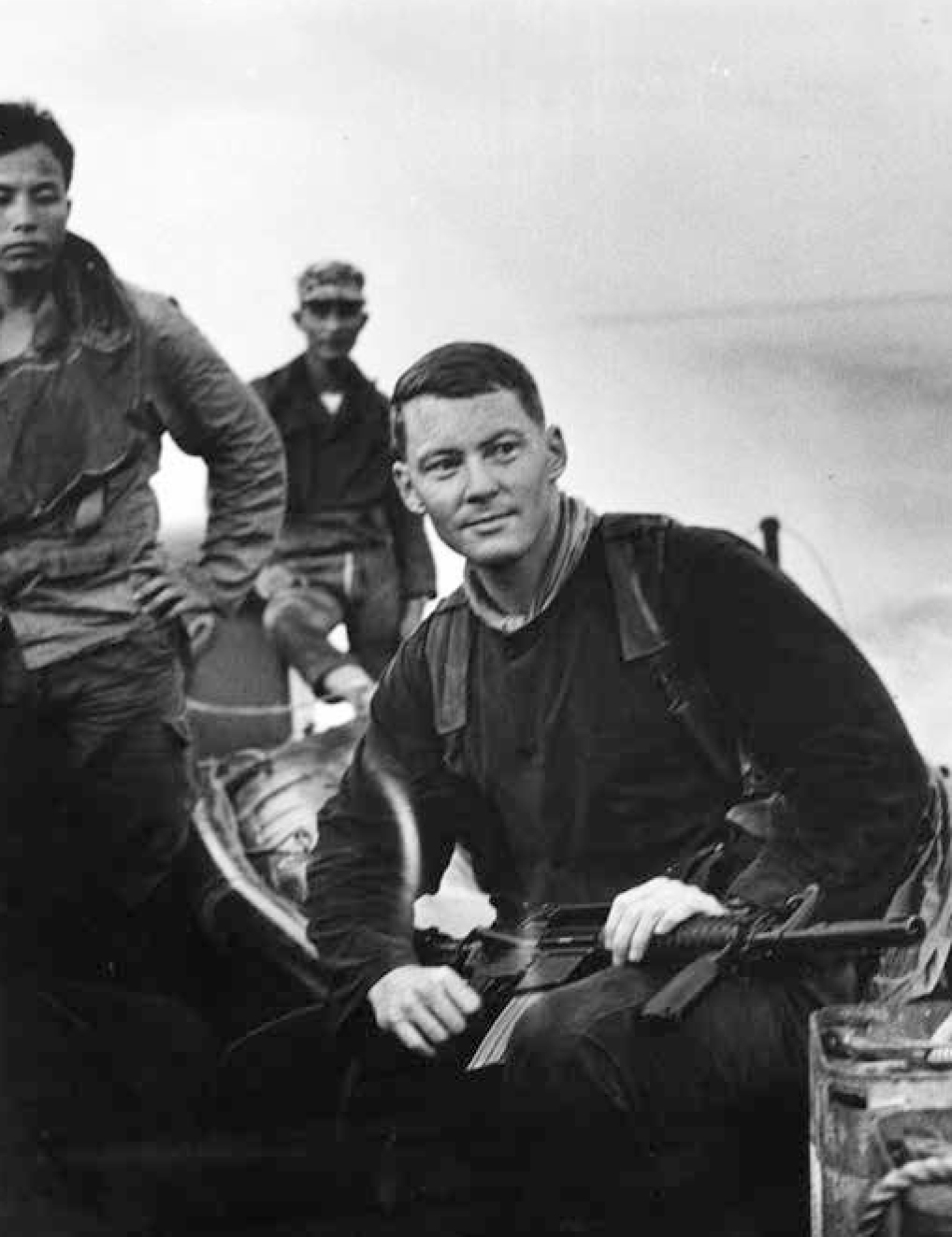
Col Vogel said of the action, “Returning from a mission to the DMZ [demilitarized zone], fatigue written on my face. We sailed north for anywhere from 8 to 12 hours, looping far out to sea to avoid enemy radar, then made a dash to the coast. The team launched by rubber boat to about 1,000 yards offshore, then swam into the target area to conduct the operation.” Frederick J. Vogel Collection, COLL/5577, Archives Branch, Marine Corps History Division
Colonel Vogel’s collection has helped fill a significant gap in the holdings of the Archives Branch. In 2014, Archives received the papers of Colonel Andrew R. Finlayson, who was a force reconnaissance platoon commander and wrote the books Killer Kane: A Marine Long-Range Recon Team Leader in Vietnam, 1967–1968 (2013) and Rice Paddy Recon: A Marine Officer’s Second Tour in Vietnam, 1968–1970 (2015) about this service. Archives also maintains the papers of Major Michael R. Lamb, who served with 1st Force Reconnaissance Company in Okinawa, Japan, and was a parachute test jumper in 1964, as well as the papers of Bart Russell who served in 1st Force Reconnaissance Company in Vietnam from 1966 to 1967. With 2018 marking the 50th anniversary of the Tet offensive, these collections will be of great interest to researchers. No archives can exist without generous donations of material such as Colonel Vogel’s. It is through sharing these items that Archives Branch is able to preserve not only history, but the stories of those Marines with whom he served—especially those who did not return from Vietnam.
•1775•
Endnotes
- Alisa Whitley holds a master of library and information science degree with a focus on archival management from the University of Pittsburgh. Following graduate school, she worked as an archivist for the National Society Daughters of the American Revolution. She has been serving as an archivist for the Archives Branch, Marine Corps History Division, since 2006 and as the branch head since May 2018.
- For information on the Phoenix Program, read Col Andrew R. Finlayson (Ret), “A Retrospective on Counterinsurgency Operations: the Tay Ninh Provincial Reconnaissance Unit and its Role in the Phoenix Program, 1969–70,” Studies in Intelligence 51, no. 2 (2007): 59–69; William Rosenau and Austin Long, The Phoenix Program and Contemporary Counterinsurgency (Washington, DC: Rand National Defense Research Institute, 2009); and Douglas Valentine, The Phoenix Program (Bloomington, IN: iUniverse, 2000).
- For access to these photographs, please visit USMC Archives albums on Flickr.